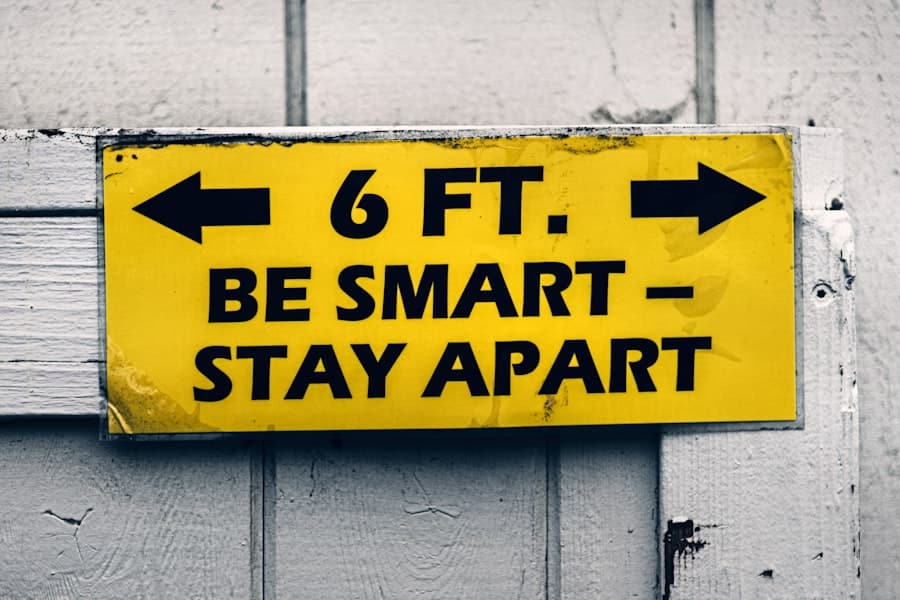The Internet of Things (IoT) represents a transformative shift in how devices communicate and interact with one another, creating a network of interconnected systems that can collect, share, and analyze data. This technological evolution is particularly significant in the context of smart cities, urban environments that leverage IoT technologies to enhance the quality of life for their residents. Smart cities utilize a variety of sensors, devices, and data analytics to optimize urban services, improve infrastructure, and promote sustainability.
By integrating IoT into city planning and management, municipalities can address pressing challenges such as traffic congestion, waste management, and energy consumption. The concept of smart cities is not merely about technology; it encompasses a holistic approach to urban living that prioritizes efficiency, sustainability, and citizen engagement. As urban populations continue to swell, the need for innovative solutions becomes increasingly urgent.
Smart cities aim to create a seamless integration of technology into everyday life, enabling residents to interact with their environment in more meaningful ways. This integration fosters a sense of community while also addressing critical issues such as climate change and resource depletion. The role of IoT in this context is pivotal, as it provides the backbone for data-driven decision-making and real-time responsiveness to urban challenges.
Key Takeaways
- IoT and smart cities are interconnected concepts that aim to improve the quality of life for citizens through the use of technology and data.
- Energy consumption in smart cities is a major concern due to the increasing urbanization and demand for resources.
- IoT plays a crucial role in energy management by providing real-time data and insights for better decision-making and resource allocation.
- IoT solutions for energy efficiency include smart meters, sensors, and automation systems that help in monitoring and optimizing energy usage.
- IoT applications for smart grids enable better integration of renewable energy sources, demand response, and grid stability for a more sustainable energy infrastructure.
Energy Consumption in Smart Cities
Energy consumption is a central concern for smart cities, as urban areas account for a significant portion of global energy use. According to the International Energy Agency (IEA), cities consume over two-thirds of the world’s energy and are responsible for more than 70% of carbon emissions. This staggering statistic underscores the importance of implementing energy-efficient practices within urban environments.
As cities expand and populations grow, the demand for energy continues to rise, leading to increased pressure on existing infrastructure and resources. Consequently, managing energy consumption effectively is crucial for sustainable urban development. In smart cities, energy consumption patterns can be complex and multifaceted.
Factors such as transportation systems, residential energy use, and commercial activities all contribute to the overall energy footprint of an urban area. For instance, inefficient public transportation systems can lead to higher fuel consumption and increased emissions. Similarly, outdated building designs may result in excessive heating and cooling needs, further straining energy resources.
Addressing these issues requires a comprehensive understanding of energy dynamics within the city and the implementation of targeted strategies to reduce consumption while maintaining quality of life.
The Role of IoT in Energy Management
IoT plays a transformative role in energy management within smart cities by enabling real-time monitoring and control of energy systems. Through the deployment of sensors and connected devices, city planners can gather vast amounts of data on energy usage patterns across various sectors. This data can then be analyzed to identify inefficiencies, predict demand fluctuations, and optimize resource allocation.
For example, smart meters installed in residential homes provide detailed insights into energy consumption habits, allowing homeowners to adjust their usage based on real-time feedback.
By utilizing smart grids equipped with IoT technology, cities can better manage the distribution of energy generated from solar panels or wind turbines.
These grids can automatically adjust to changes in supply and demand, ensuring that renewable energy is utilized efficiently while minimizing reliance on fossil fuels. The ability to monitor energy flows in real-time not only enhances grid reliability but also empowers consumers to make informed decisions about their energy use.
IoT Solutions for Energy Efficiency
Numerous IoT solutions have emerged to enhance energy efficiency in smart cities. One prominent example is the implementation of smart lighting systems that utilize sensors to adjust brightness based on ambient light levels and pedestrian activity. These systems can significantly reduce energy consumption by ensuring that lights are only activated when needed.
Cities like Los Angeles have adopted such technologies, resulting in substantial cost savings and reduced carbon emissions. Another innovative solution involves the use of smart thermostats in residential and commercial buildings. These devices learn user preferences over time and automatically adjust heating and cooling settings to optimize energy use without sacrificing comfort.
For instance, Nest Labs’ smart thermostat has gained popularity for its ability to reduce energy consumption by up to 15% through intelligent scheduling and remote access features. By integrating these IoT solutions into building management systems, cities can create more sustainable environments while also lowering operational costs.
IoT Applications for Smart Grids
Smart grids represent a critical application of IoT technology in the realm of energy management within smart cities. These advanced electrical grids utilize digital communication technology to monitor and manage the flow of electricity from various sources to consumers. By incorporating IoT devices such as smart meters, sensors, and automated control systems, smart grids can enhance the reliability and efficiency of electricity distribution.
One key feature of smart grids is their ability to facilitate demand response programs. These programs incentivize consumers to reduce or shift their electricity usage during peak demand periods, helping to alleviate strain on the grid. For example, during extreme weather events when electricity demand surges, utilities can send signals to connected devices in homes and businesses to temporarily reduce consumption or shift usage to off-peak hours.
This not only helps stabilize the grid but also allows consumers to save on their energy bills. Additionally, smart grids enable better integration of distributed energy resources (DERs), such as rooftop solar panels and battery storage systems. By utilizing IoT technology to monitor these resources in real-time, utilities can optimize their operation and ensure that excess energy generated by DERs is efficiently fed back into the grid.
This creates a more resilient energy system that can adapt to fluctuations in supply and demand while promoting the use of renewable energy sources.
Benefits of IoT in Reducing Energy Waste
Real-Time Data Analytics for Informed Decision-Making
One significant advantage is the ability to provide real-time data analytics that empower both consumers and city officials to make informed decisions about energy use. With access to detailed insights into consumption patterns, residents can identify areas where they can cut back on usage or adopt more efficient practices.
Optimizing Operational Efficiency
For instance, businesses can analyze their operational data to pinpoint inefficiencies in machinery or lighting systems that contribute to excessive energy consumption. Moreover, IoT-driven automation enhances operational efficiency across various sectors within a city. For example, smart irrigation systems equipped with soil moisture sensors can optimize water usage for landscaping by only activating when necessary.
Reducing Energy Waste and Enhancing Quality of Life
This not only conserves water but also reduces the energy required for pumping and distributing water throughout the city. Similarly, smart waste management systems utilize sensors in trash bins to monitor fill levels, allowing waste collection services to optimize routes and schedules based on actual need rather than fixed schedules. The cumulative effect of these IoT applications leads to significant reductions in overall energy waste within smart cities. By fostering a culture of efficiency and sustainability through data-driven insights and automation, municipalities can create environments that prioritize resource conservation while enhancing the quality of life for residents.
Challenges and Limitations of IoT in Energy Efficiency
Despite the promising potential of IoT technologies in enhancing energy efficiency within smart cities, several challenges and limitations must be addressed. One major concern is data privacy and security. As cities deploy an increasing number of connected devices that collect sensitive information about residents’ habits and preferences, ensuring robust cybersecurity measures becomes paramount.
A breach could not only compromise personal data but also disrupt critical infrastructure services. Another challenge lies in the interoperability of different IoT devices and systems. With numerous manufacturers producing a wide array of devices, ensuring seamless communication between these systems can be complex.
Standardization efforts are essential to facilitate integration across various platforms and ensure that data can be shared effectively among different stakeholders. Without standardized protocols, cities may struggle to fully realize the benefits of IoT technologies due to fragmented systems that operate in silos. Additionally, the initial investment required for implementing IoT solutions can be a barrier for many municipalities.
While long-term savings from increased efficiency may offset these costs, securing funding for upfront investments remains a challenge for cash-strapped local governments. As such, developing innovative financing models or partnerships with private sector entities may be necessary to overcome this hurdle.
Future Outlook for IoT in Smart Cities
Looking ahead, the future of IoT in smart cities appears promising as technology continues to evolve at an unprecedented pace. The integration of artificial intelligence (AI) with IoT systems is expected to enhance predictive analytics capabilities further, allowing cities to anticipate energy demands more accurately and respond proactively to fluctuations in usage patterns. This synergy between AI and IoT will enable smarter decision-making processes that optimize resource allocation while minimizing waste.
Moreover, advancements in edge computing will play a crucial role in enhancing the efficiency of IoT applications within urban environments. By processing data closer to where it is generated rather than relying solely on centralized cloud servers, edge computing reduces latency and improves response times for critical applications such as traffic management or emergency response systems. As public awareness regarding climate change and sustainability grows, there will likely be increased pressure on municipalities to adopt innovative solutions that prioritize environmental stewardship.
The ongoing development of IoT technologies will empower cities not only to meet these demands but also to lead by example in creating sustainable urban ecosystems that benefit both residents and the planet as a whole. In conclusion, while challenges remain in fully realizing the potential of IoT within smart cities, ongoing advancements in technology coupled with a commitment to sustainability will pave the way for more efficient energy management practices that ultimately enhance urban living experiences.
In a related article on Recode, the focus is on the latest technology news and trends, including the impact of IoT on various industries. This article delves into how IoT is revolutionizing the way cities operate and how it can help reduce energy waste in smart cities. By leveraging IoT devices and sensors, cities can optimize energy consumption, improve efficiency, and ultimately create a more sustainable environment for residents. The Role of IoT in Reducing Energy Waste in Smart Cities aligns with the broader discussion on technology’s role in shaping our future.
FAQs
What is IoT?
IoT stands for Internet of Things, which refers to the network of physical devices, vehicles, home appliances, and other items embedded with electronics, software, sensors, and connectivity that enables them to connect and exchange data.
How does IoT help in reducing energy waste in smart cities?
IoT helps in reducing energy waste in smart cities by enabling the collection and analysis of real-time data from various sources such as buildings, transportation systems, and utilities. This data can be used to optimize energy usage, improve efficiency, and identify areas for potential energy savings.
What are some examples of IoT applications in reducing energy waste in smart cities?
Some examples of IoT applications in reducing energy waste in smart cities include smart lighting systems that adjust brightness based on occupancy and natural light, smart thermostats that regulate temperature based on occupancy and weather conditions, and smart grid systems that optimize energy distribution and consumption.
What are the benefits of using IoT to reduce energy waste in smart cities?
The benefits of using IoT to reduce energy waste in smart cities include lower energy costs, reduced environmental impact, improved infrastructure efficiency, and enhanced quality of life for residents. Additionally, IoT can help cities meet sustainability goals and reduce their carbon footprint.
What are the challenges of implementing IoT for reducing energy waste in smart cities?
Challenges of implementing IoT for reducing energy waste in smart cities include the high initial cost of IoT infrastructure, concerns about data privacy and security, interoperability issues between different IoT devices and systems, and the need for skilled professionals to manage and analyze the data generated by IoT devices.



